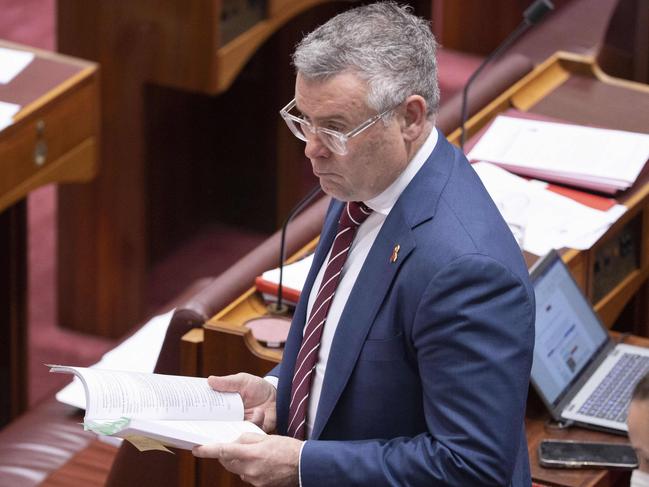Australian wine exports to China have risen strongly since trade tariffs were lifted
New data shows the growth in Australian wine exports to China since tariffs were lifted in late March.

Australian wine is pouring back into China after the lifting of crippling trade tariffs, but the industry remains wary of over-reliance on its biggest market.
New data from the Australian Bureau of Statistics shows Australia sent $142m worth of wine to China in May, the most since crippling tariffs came into effect in 2020 and the fourth-highest monthly figure in the past five years. In May 2023 just $1.4m worth of wine was sent to China.

said export volumes since the tariff was lifted in late March showed a promising turnaround for the industry.
“We know the past few years have been incredibly tough for Australia’s wine sector,” he said.
“So to see these figures come through is just fantastic news for the whole industry.
“This demonstrates the importance of the Albanese government’s work to stabilise our relationship with China.
“That work is now delivering real dividends to Australian farmers and the whole ag industry.
“These figures show the demand for premium Australian wine in China is as high as ever.”
From $1.3bn in the 12 months to October 2020, the value of Australian wine exports to China dropped to about $10m after the Chinese government introduced a 220 per cent tariff amid heightened diplomatic tension between Beijing and Canberra.
It caused havoc in the Australia wine industry, which had been heavily reliant on the Chinese market, at a time when the world faced a glut in wine production.
While surveys show the Australian wine brand remains popular in China, market analysts expected that cost-of-living pressures and a long-term decline in alcohol consumption from younger generations would reduce the Chinese wine market to about a third of its former size.
The May figures are an improvement on April, the first month after the market reopened, when $85m worth of Australian wine was exported to China.
The majority was exported from South Australia which sent nearly 7.4 million litres worth $125m, followed by $8m from Victoria, $5.3m from NSW, $1.5m from Western Australia, $300,000 from Queensland and $26,000 from Tasmania.
“While these figures demonstrate the importance of the Chinese market to our wine sector, we are still committed to diversifying our export market, in order to strengthen the future of the industry,” Senator Watt said.
Supply of wine globally is still higher than demand, with global wine consumption at its lowest point in 30 years.

The reduced demand has forced some grape growers to rip out vines and reduce production.
But the resurgence of the Chinese market will offer hope to some grape growers in the face of declining exports to other key markets in the US and Europe.
Sirromet Wines, which grows grapes in the high-altitude Granite Belt region in southern Queensland, sent its first post-tariff shipment of wine to China in May and planned to recapture its former market share.
“Sirromet Wines is working diligently to meet the increasing demand for our wines into the Chinese market and we look forward to continuing to build long-lasting relationships in this vibrant market,” Sirromet director Nadine Delahunty said.
For three of the past five years, the Australian wine grape crush has been below the 10-year average, although it increased by 9 per cent in 2024 to an estimated 1.43 million tonnes, according to figures released by Wine Australia last week.
Underpinning the increase was a 31 per cent increase in chardonnay, which at 332,643 tonnes overtook shiraz as Australia’s top variety by crush size.







To join the conversation, please log in. Don't have an account? Register
Join the conversation, you are commenting as Logout